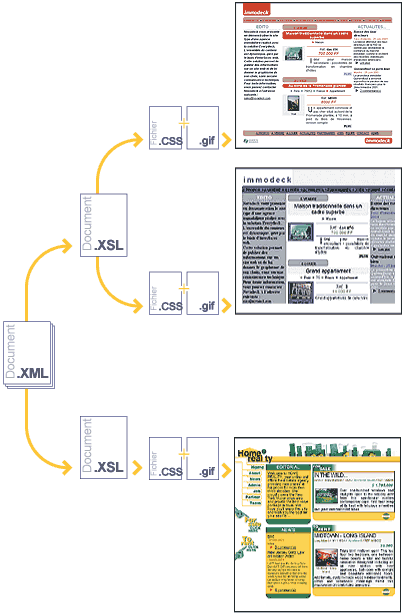 Novadeck Content Management System is a Java content management system originally built for an ASP (Application Service Providing, i.e. rented application web service) mode. In addition to CMS traditional functions (publication, updating, multilingualism, multi-users, administration's rights, moderation, content and graphic design separation, etc.), the solution features an innovative descriptive approach in web site's construction, the management on a single platform of a large number of sites with various contents and the ability to generate web sites from a template. It is designed for companies already seizing or wishing to acquire a complex portal web site where content management's aspects are essential. Novadeck Content Management System is a Java content management system originally built for an ASP (Application Service Providing, i.e. rented application web service) mode. In addition to CMS traditional functions (publication, updating, multilingualism, multi-users, administration's rights, moderation, content and graphic design separation, etc.), the solution features an innovative descriptive approach in web site's construction, the management on a single platform of a large number of sites with various contents and the ability to generate web sites from a template. It is designed for companies already seizing or wishing to acquire a complex portal web site where content management's aspects are essential. |
| Main features of the platform
Descriptive approach of web sites' conception
The conception of a dynamic web site usually implies a programmatic approach: business processes are implemented in an executable code (PHP, ASP, JS, Servlet...) in order to handle data specific to the web site. Business processes are coded by specialized engineers in order to enable the management of content (data recovering, data updating, data formatting, etc.). The integration & design team then associated them to a layout.Web site conception as proposed by Novadeck puts an end to this programmatic approach by using a descriptive approach of the needs.
Once the data's structures that will be handled (through a simplified interface for business object's creation) have been defined, handling methods are immediately available and cover all sorts of needs: content linked to each object can be displayed, formatted, published or de-published, moderated, searched, updated or deleted through universal interfaces which are not programmed.
The conception of each content page follows this descriptive approach. It is limited to the description of types of data for each page, possibly under specific conditions, and integrated in a structuring XML framework. Lastly, the resulting XML content is adapted to the display terminal (web browser, wap, etc.) by applying a standard XSL stylesheet, which enables various layouts of a unique content.
| Such an approach features unquestionable advantages: much shorter development time, lower technical level for site's creators, and interfaces' standardization. |
|
 |
 |
| XSL style sheets' use to change the publication of a unique XML content |
 |
 |
 |
|
